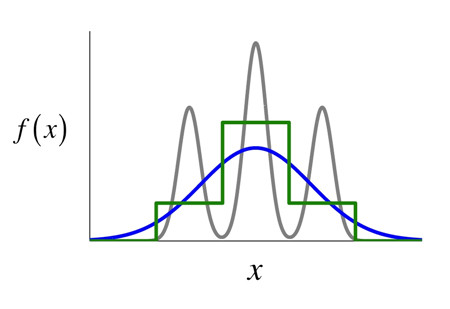Peking University, July 7, 2015: No matter how carefully we plan an action, what we do may differ from what we planned to do. We may aim to pick up a glass of water—and instead knock it into a friend’s lap. In the past decade many researchers have demonstrate that we plan our reaching movements to compensate for our own visual and motor variability and we are very good at it. But how can the nervous system represent the possible outcomes of all the possible movements we might ever make?
Hang Zhang at Department of Psychology, McGovern Institute for Brain Research andCenter for Life Sciencesat Peking University and her collaborators, Nathaniel D. Daw and Laurence T. Maloney at New York University, have recently published a paper on Nature Neuroscience titled ‘Human representation of visuo-motor uncertainty as mixtures of orthogonal basis distributions’. They prove for the first time that human representation of probabilistic information is not—as widely presumed—continuous, but discrete.
In the paper, Zhang, Daw and Maloney describe three studies using a novel mathematical method that permitted them to measure the brain’s representation of visual and motor error in a simple reaching task. On each experimental trial human participants were asked—not to hit a target—but to judge which of two targets they thought they were more likely to hit. By systematically varying the target shapes, Zhang and colleagues could gradually build a representation of the motor error distribution that best explained participants’ choices. In a separate experimental session they measured each participant’s actual visuo-motor error by having them repeatedly try to hit targets.
While subjects’ objective distributions were uni-modal, close to Gaussian, their estimated internal distributions were typically multi-modal (multiple discrete bumps), best described as mixtures of a small number of distributions that were close to non-overlapping, orthogonal—termed ‘discrete mixture distributions’. Mixtures of a small number of uniform distributions outperformed other mixture distributions including mixtures of Gaussians. Zhang and colleagues discuss the possible reasons for such discrete representation and how it might reduce computational load on the brain inherent in moving well.
Illustration of a Gaussian distribution (blue) and two orthogonal mixture distributions: mixture of Gaussians (gray) and mixture of uniforms (green).
The study was supported by the Peking-Tsinghua Center for Life Sciences and the PKU-IDG/McGovern Institute for Brain Research.
Edited by: Zhang Jiang
